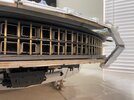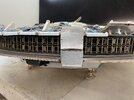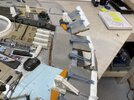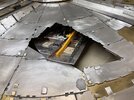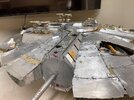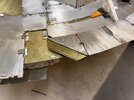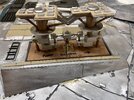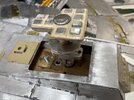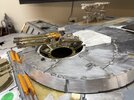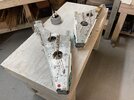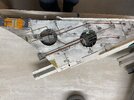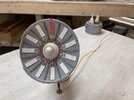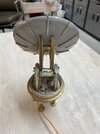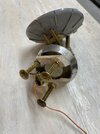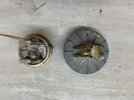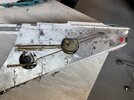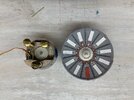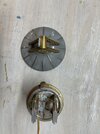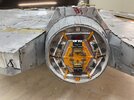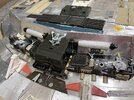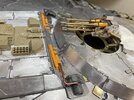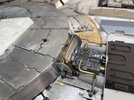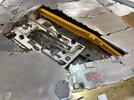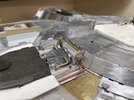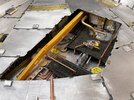Deviated again on the Falcon. Stinson Lenz’s Full Reverse posting back in 2014 shows excellent knowledge and application of jet engine thrust reverser design.
I had to copy his work on one of the engine flaps. Tried to use the flap actuator to the extent practical. Top flap slides back in a set of channels, drops, and then “inverts” at the joint end by “breaking back” the coupling. Bottom flaps follows a similar path.
I had to copy his work on one of the engine flaps. Tried to use the flap actuator to the extent practical. Top flap slides back in a set of channels, drops, and then “inverts” at the joint end by “breaking back” the coupling. Bottom flaps follows a similar path.

